In the competitive world of interior design, a well-curated and reflective portfolio is the selling point for you as a designer. Whether you are a student seeking a work placement or a recent graduate looking to find your breakthrough design role in the industry, your portfolio acts as your visual resume.
Together, we will outline the key stages that will enable you to produce a design portfolio that authentically reflects your identity as a designer. We’ll explore presentation techniques, portfolio contents, pitfalls to avoid, and we’ll signpost some helpful external resources. It’s also important to consider building your portfolio in several formats; this will increase your overall engagement.
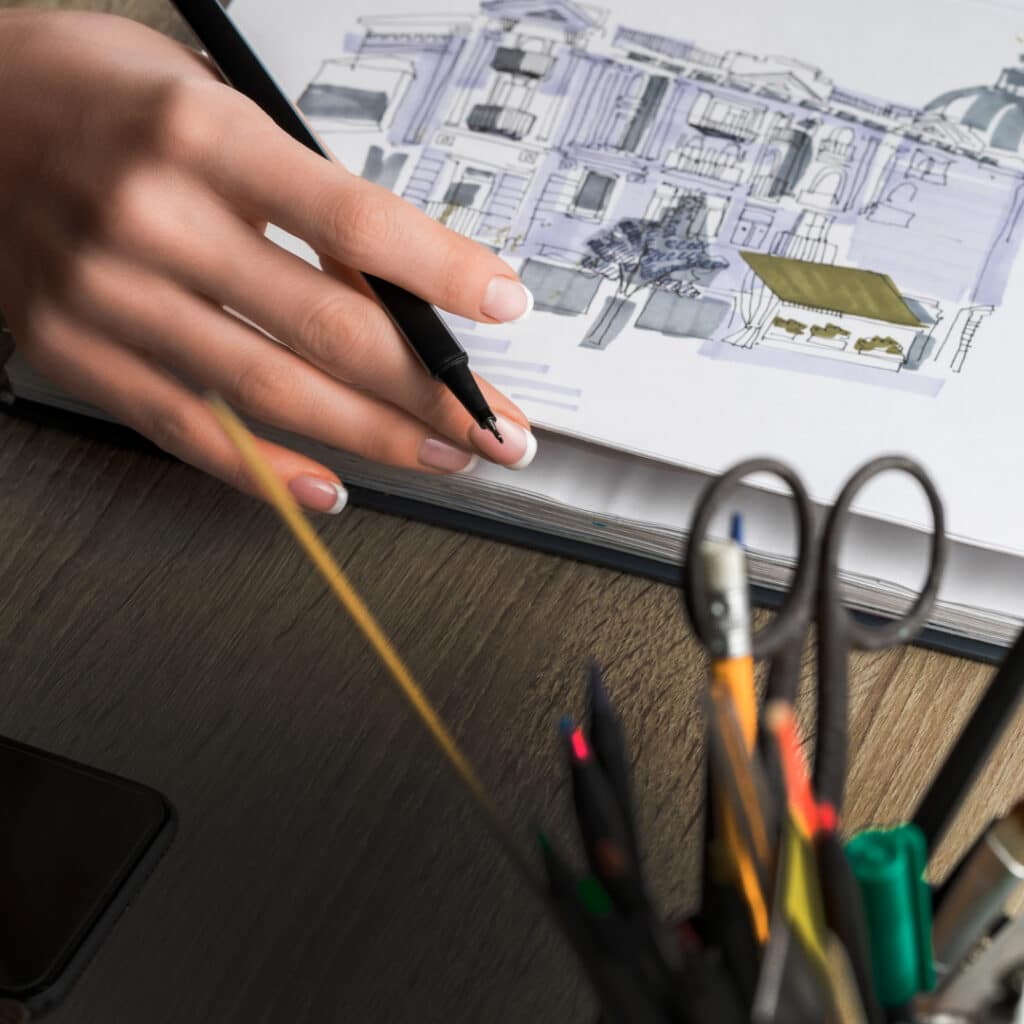
Digital Interior Design Portfolio
Digital interior design portfolios allow for interactive experiences, incorporating multimedia elements such as photos, videos, and virtual tours to bring designs to life. When approaching an online portfolio, designers should consider the layout, navigation, and user experience to ensure seamless interaction. Images should be high quality, so ensure you export them at a high enough resolution to reduce the likelihood of pixelation. Videos provide an opportunity to delve deeper into the design process, offering a ‘behind-the-scenes’ insight from concept to completion. Additionally, virtual tours or 3D renderings enable viewers to explore spaces from different perspectives, gaining a comprehensive understanding of the designer’s vision.
By strategically using social media platforms, interior designers can effectively establish an online presence in a for free. These can also be highlighted on printed collateral such as CVs or business cards.
- Instagram – With its visually appealing grid layout, Instagram serves as an ideal platform for designers to showcase their projects, inspiration, and behind-the-scenes creative processes.
- TikTok – This app provides an opportunity for designers to engage with a slightly younger audience through short, captivating videos that offer quick design tips, DIY hacks and before-and-after transformations, thus expanding their reach and brand awareness.
- LinkedIn – A professional setting for designers to network with industry professionals, share articles and achievements, and ultimately showcase their expertise through written posts.
Printed Interior Design Portfolio
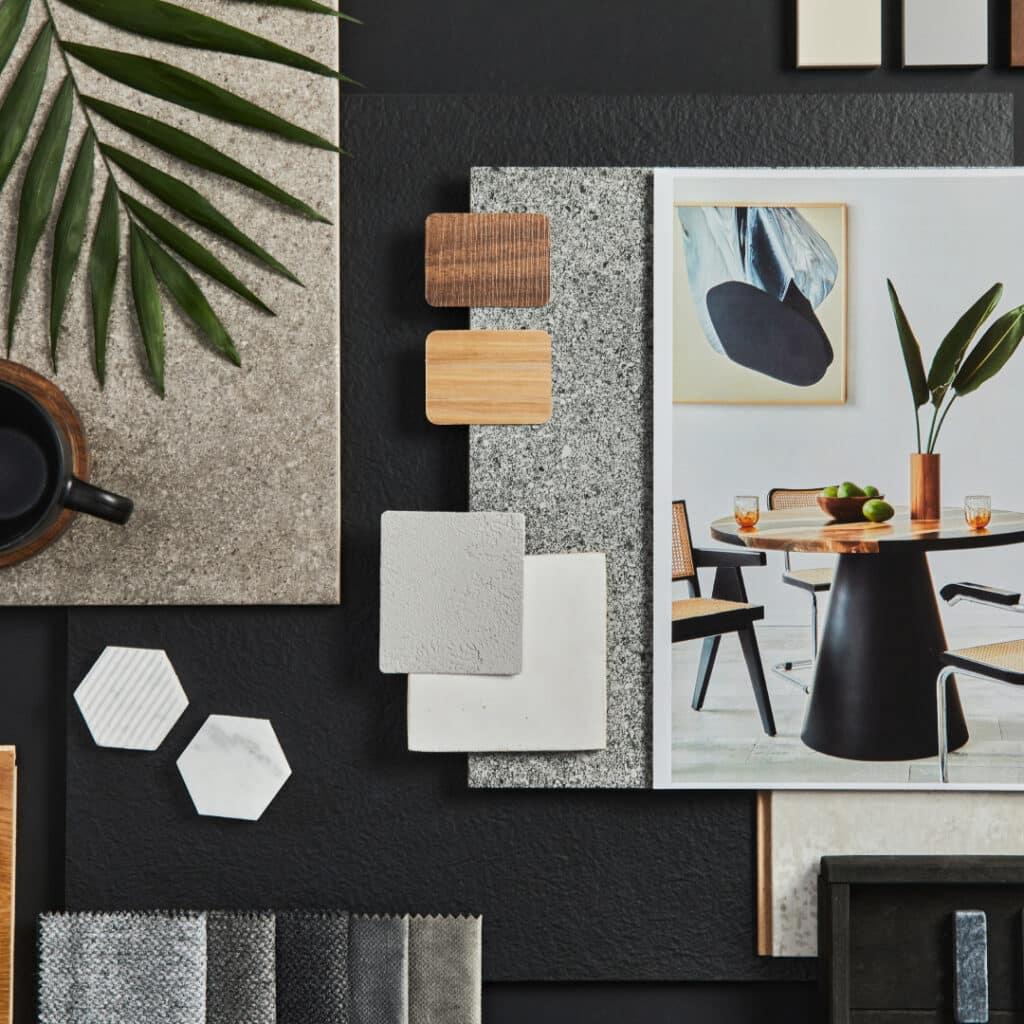
Printed portfolios offer a tactile experience, allowing attention to detail in a tangible format. When preparing a printed portfolio, consider your choice of paper; opt for a thickness of 250gsm, as it is known for its sturdiness and ability to hold the weight of high-quality prints without bending or creasing.
The recommended format for printed portfolios is A3 landscape, as it provides ample space to showcase designs in detail while maintaining a visually appealing layout. However, this is down to personal preference. To ensure optimal print quality, entrust the printing process to a professional print shop. This approach guarantees a crisp and vibrant outcome that demonstrates your commitment to professionalism.
Interior Design Portfolio Binding
Portfolios can be bound in various ways, each offering different benefits in terms of presentation, durability, and versatility. The choice of binding method depends on factors such as budget, aesthetic preferences, and the intended audience. Together we will explore a few binding options below.
Ring Binders
This method offers flexibility as pages can be easily added, removed, or rearranged. It makes them ideal for designers who frequently update their content or want to customise presentations for specific clients or projects. However, ring binders may not offer the same polished aesthetic you may desire.
Hand Binding
This approach involved the meticulous process of assembling each page by hand. This method allows for complete customisation, from the choice of materials to the stitching technique used. Hand binding celebrates craftsmanship and individuality. This makes them a standout option. However, this method is time consuming and requires more specialised skills.
Perfect Binding
This involves adhering the edges of each page to a flat spine, creating a clean and polished finish. This method is commonly used for printed books and magazines, offering a sleek and modern aesthetic. This method can be costly and does not offer flexibility.
Hardcover Binding
This involves attaching the pages into a rigid cover made of cardboard or chipboard. This approach provides maximum durability and protection, making it the most suitable for long-term use.
Understanding when and where to use each type of portfolio is crucial for making a lasting impression. While digital portfolios excel in online presentations and email correspondence, printed portfolios are advisable in face-to-face meetings, job interviews, and networking events. The tactile nature of a printed portfolio fosters a personal connection, allowing clients and employers to engage with your designs.
Templates and Software
The first stage in producing a design portfolio is outlining a rough template or page composition for your portfolio to follow throughout, ensuring consistency. You may feel confident enough to design your own layout for your portfolio. However, if you need an initial structure to work from, there are some helpful resources which we will explore below.
Issuu – is a very helpful online marketing platform which allows a user to post content which can then be viewed and downloaded by all users. There is a plethora of interior design portfolios available that can serve as inspiration.
Pinterest – is another valuable tool that allows users to explore a vast array of images and documents shared by others. It is a favoured platform for discovering templates for portfolios and CVs, as well as for exploring design projects and various styles of 3D visualisations.
Canva – is a very user-friendly graphic design platform that provides customisable templates for creating both digital and physical print materials.
Adobe – If you opt to use a program such as Adobe InDesign to create your portfolio, it’s worth noting that Adobe also provides free downloadable templates for a variety of document types. These documents can be modified to suit a range of preferences.
WIX – For online portfolios, WIX is a comprehensive resource that offers many presets that may align with the graphical preferences of you as a designer. Wix also enables you to create blogs and fully functioning online stores.
Squarespace –is best utilised for online portfolios or websites. Squarespace is a user-friendly portfolio website builder that allows users to showcase work online. Again, professional templates are accessible through Squarespace.
Portfolio Work to Include
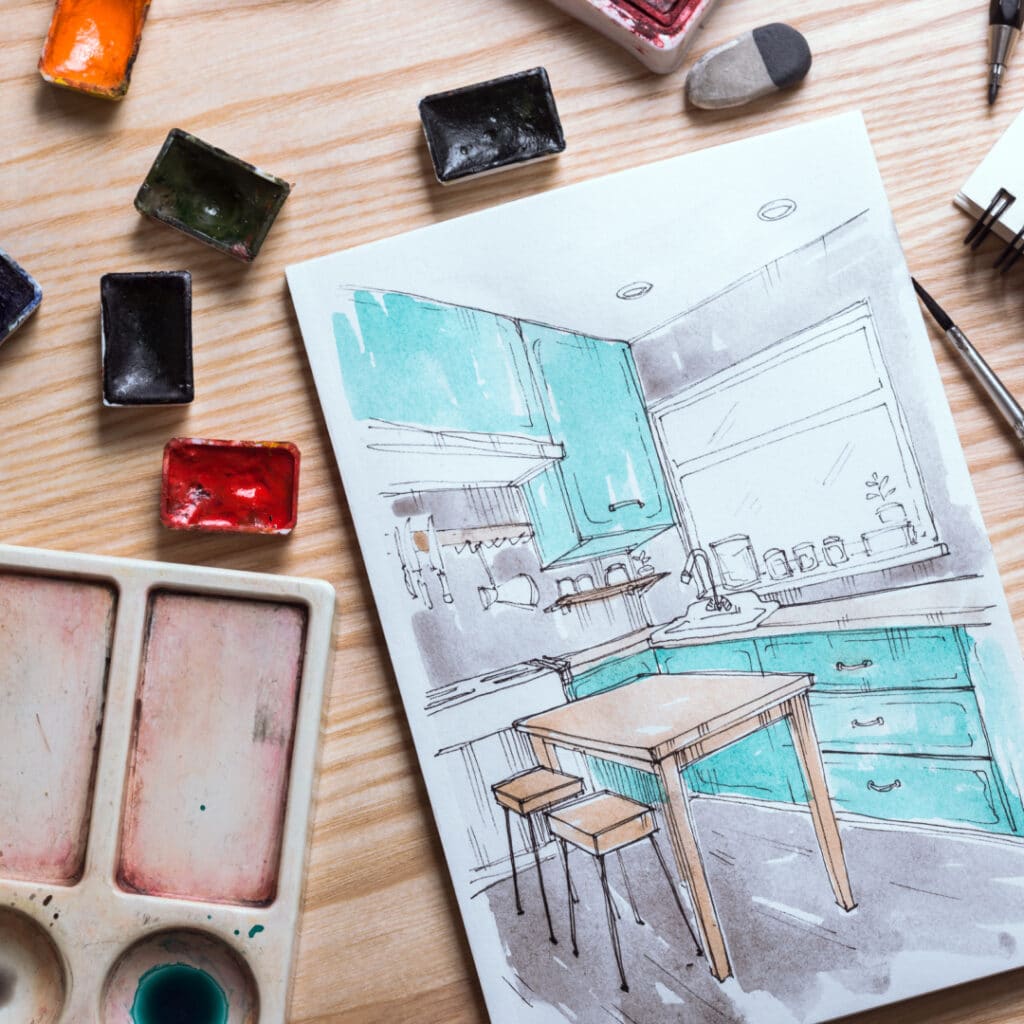
It is important that when you are collating projects for your design portfolio, you select work that demonstrates both a range of different skill sets and versatility. A general rule to follow is quality over quantity, as a strong portfolio with a handful of projects is often preferred over a lengthy compilation of average projects.
Additionally, selecting projects that you are most passionate about will ensure that your enthusiasm comes across to a potential employer when you’re presenting it. Make sure to include a variety of briefs within different sectors or industries. This will illustrate your adaptability as a designer and potentially appeal to a broader audience. Below we will outline the elements you should include in your portfolio.
The Process
The process holds almost as much significance as the result in interior design projects. Key skills and elements such as development sketches, research, mood boards, and model making allow a potential employer to understand your creative journey, design process, and problem-solving skills.
Image Quality
It’s important to invest time in ensuring that the imagery used is crisp, high-quality, and defined. Additionally, ensure that any photographs of models or finished projects are well-lit and consistent across the portfolio to support overall cohesion.
Technical Skillset
Displaying a diverse range of skill sets within your design portfolio is crucial. Among the top skills sought by employers are your technical abilities, including technical floor plans, elevations, sections, 3D visualisations, isometric /axonometric drawings, and detail drawings. These not only showcase your ability to translate ideas into reality but also communicate your proficiency with a variety of design software. Your technical drawings should also represent you as a designer.
Personalisation
Add your personality to your portfolio. Potential clients or employers are investing in you and your creative flair. Including a brief statement or bio about your design approach sets the tone for your portfolio. Adopt a consistent and visually appealing layout that reflects your design aesthetic. Consider a compatible font, colour palette, and page composition.
Organisation
Structure your portfolio in a logical and easy-to-follow manner. Creating sections for each project with clear headings can help with this. A table of contents and page numbering make for quick referencing. Employers will see many portfolios and may not have much time to look through them entirely, so ensure that you are making this process as smooth as possible to impress.
Project Examples
Where possible, include projects or collaborations that have been actualised. This could include work from internships, freelance projects, or instances where you have assisted a family member or friend. This experience adds credibility to your portfolio and demonstrates your ability to work within practical constraints.
Common Portfolio Errors
Using unlicensed images
It is important from a plagiarism perspective that you only use images of designs that you have either produced or taken yourself, avoiding stock images. If you are incorporating images that aren’t your own for research, concepts, or inspiration, then these should be clearly referenced throughout.
Too much text
While it is important to explain your design process, avoid overwhelming your portfolio with excessive text. Keep descriptions concise and focus on key insights.
Producing an impressive interior design portfolio is a crucial step towards building a successful career in the industry. By showcasing your strongest projects, a variety of skill sets, and presenting your work in a graphically considered format, you can stand out within a competitive field. The last piece of advice is to remember that your portfolio is a representation of your continuously evolving skills, so keep it fresh and up to date with recent projects.
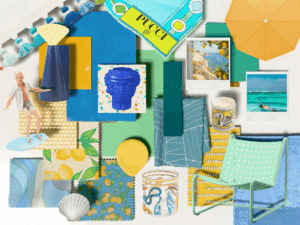
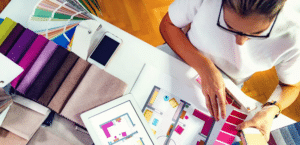
2 responses
I’m 16 and interested in interior designer to pursue it as my dream career I would love if someone could get back to me with a direction of who to contact.
Hi Alice,
Thank you for reaching out! We’re so excited to hear about your passion for interior design and would love to help you pursue your dream career! To get started, feel free to contact our Support Team. You can reach us by phone at +44 115 912 3412 or by email at hello@nda.ac.uk. If you’d prefer, you can also request a call back or use the contact form on our website; https://nda.ac.uk/contact/